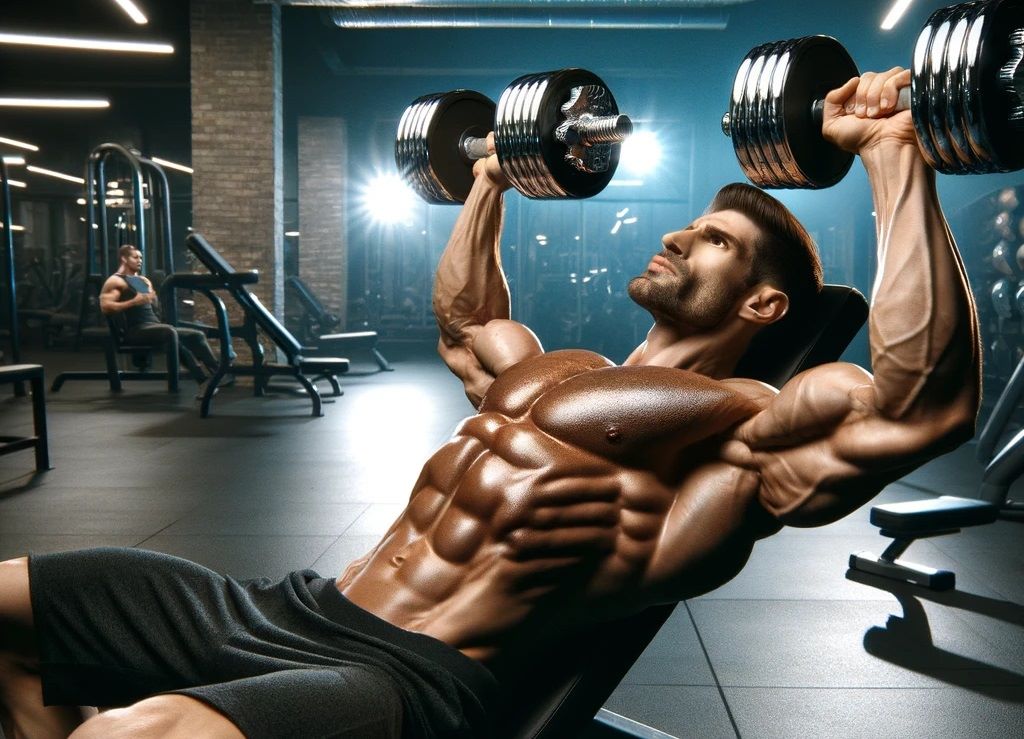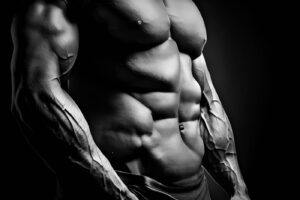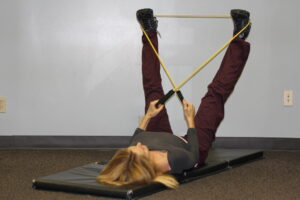Are you ready to transform your physique and achieve a healthier body composition? In an era where health and wellness take center stage, the importance of body composition cannot be overstated. For fitness enthusiasts, weight loss seekers, and health-conscious individuals, understanding and engaging in the right exercises is the key to the body sculpting they desire. In this comprehensive guide, we explore the intricacies of body composition and present a range of exercises that can target various fitness goals.
Understanding Body Composition
Body composition gives you a good idea of your overall health, going beyond just numbers on a scale. It’s like a detailed look at the fat and non-fat parts in your body—like muscles, water, bones, and organs. Balancing body fat and muscle mass not only boosts your strength but also helps keep you healthy, warding off diseases for a vibrant, energetic life.
Diving Deeper into Body Composition Components
- Body Fat Percentage: It’s crucial to understand that body fat isn’t the enemy; it plays pivotal roles from cushioning organs to regulating temperature. However, the crux lies in the percentage of your body’s weight constituted by fat. A lower or higher-than-optimal body fat percentage could signal underlying health concerns. Normal ranges vary by age, gender, and fitness level, making personalized goals essential.
- Lean Muscle Mass: Often overshadowed by the focus on fat loss, lean muscle mass deserves equal limelight. It’s the powerhouse driving your metabolism and ensuring you remain robust and resilient as you age. Increasing lean muscle doesn’t translate to bulkiness; rather, it means developing a denser, more metabolically active body composition that champions strength and efficiency.
In understanding body composition, we unlock the potential for a tailored approach to fitness and health, acknowledging the unique blueprint of each individual’s physique.
How Does Exercise Affect Body Composition?
Understanding the dynamic role of exercise in sculpting your physique reveals the multifaceted ways in which physical activity can influence body composition. Here’s a more detailed breakdown of how various forms of exercise contribute to reshaping your body:
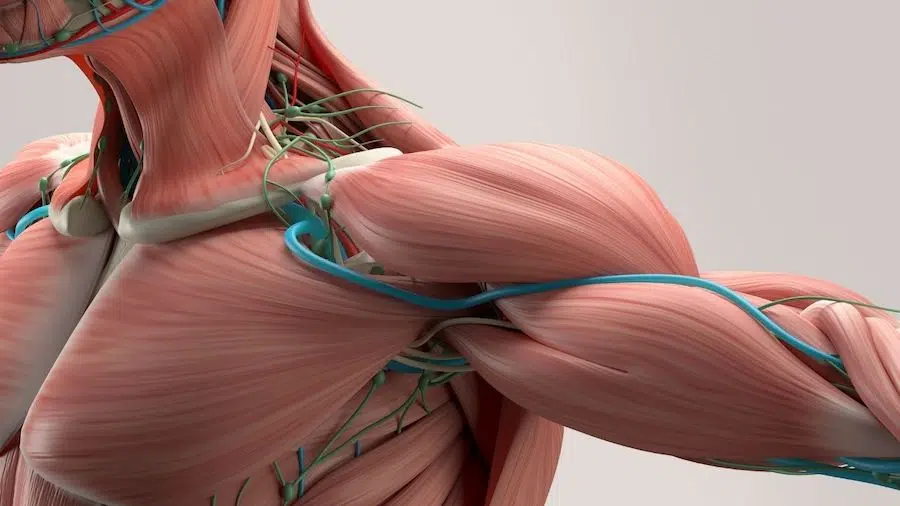
Exercise improves muscle cell and tissue contractile function.
– Effects of Exercise and Aging on Skeletal Muscle by Giovanna Distefano and Bret H. Goodpaste
Weight Loss and Reduced Body Fat: Cardiovascular exercises like jogging, swimming, or cycling are foundational in burning calories and shedding excess fat. These activities increase your heart rate and metabolism, promoting a caloric deficit which is crucial for fat loss. High-Intensity Interval Training (HIIT) takes this a notch higher by interspersing short bursts of intense activity with periods of rest, leading to increased calorie burn even in post-exercise states, known as the “afterburn effect.”
Muscle Mass Enhancement: Beyond mere fat loss, enhancing lean muscle mass is pivotal for a well-defined physique. Resistance training exercises, such as lifting weights, bodyweight workouts, and using resistance bands, stimulate muscle growth (hypertrophy) through controlled stress and micro-tears in muscle fibers, which then repair and grow stronger. This not only aids in sculpting a more muscular build but also boosts metabolism since muscle tissue burns more calories than fat tissue, even at rest.
Strengthening Bone Density and Joint Health: Exercise impacts more than muscle and fat; it significantly contributes to bone density and health. Activities that apply stress to the bones, such as weightlifting, walking, or running, prompt bone-forming cells into action, which can help in preventing osteoporosis and reducing the risk of bone fractures. Additionally, regular movement maintains joint range of motion and helps in alleviating symptoms of arthritis.
Flexibility and Composition: While often overlooked, flexibility exercises such as yoga and stretching have a role in body composition. They improve muscle elasticity, reduce the risk of injuries, and can aid in muscle recovery, contributing to a more balanced and agile body.
In essence, the relationship between exercise and body composition is both intricate and integral. A balanced regimen that incorporates cardio, strength, bone-strengthening, and flexibility exercises can optimize health benefits and lead to substantial improvements in body composition. Tailoring this mix to your personal goals, fitness level, and interests is key to not just reshaping your physique but enhancing overall well-being.
Key Exercises for Effective Weight Loss and Enhanced Endurance

Achieving weight loss and enhancing cardiovascular endurance are goals shared by many fitness enthusiasts. Incorporating specific exercises into your fitness regimen can significantly accelerate the path to reaching these objectives. Below are detailed insights into the most effective exercises for shedding pounds and boosting endurance, making your workout routine not only efficient but also enjoyable. Remember, consistency and dedication play critical roles in the success of any fitness journey.
Elevated Cardiovascular Activities
Cardiovascular exercises are paramount in any weight loss strategy. These activities increase heart rate and metabolism, which are essential for burning calories and reducing body fat. For an effective and diversified cardio routine, consider including:
- Running: Excellent for burning calories, improving heart health, and enhancing lung capacity. Incorporate interval running for increased intensity.
- Cycling: Both indoor and outdoor cycling are fantastic ways to shed fat while minimizing the impact on your joints. It’s also great for building endurance and leg strength.
- Swimming: A total body workout that’s easy on the joints and effective in burning calories. It also improves flexibility and reduces stress levels.
- Jumping Rope: An underrated yet powerful tool for cardiovascular fitness, coordination, and agility. It’s perfect for quick, high-intensity workouts.
- Dancing: Not only fun but also an effective way to elevate your heart rate, improve balance, and lose weight. Choose a style you enjoy and dance your way to fitness.
High-Intensity Interval Training (HIIT)
HIIT involves alternating between short bursts of intense exercises and periods of rest or lower-intensity activity. This method is highly effective for weight loss and improving cardiovascular fitness because it keeps the heart rate up and increases calorie burn both during and after workouts. Incorporating exercises like sprints, burpees, or jump squats in intense intervals, followed by brief rest periods, can make a HIIT session exhilarating and fruitful.
Strength Training with a Cardio Twist
Integrating strength training exercises aimed at endurance can amplify calorie burn, tone muscles, and enhance overall fitness. Opt for lighter weights with higher repetitions to keep your heart rate elevated. Exercises such as:
- Circuit Training: Sequence through multiple strength exercises with minimal rest between them. This method keeps your heart rate up, combining the benefits of cardiovascular and strength training.
- Bodyweight Movements: Push-ups, lunges, and squats performed in quick succession can build strength while contributing to cardiovascular health.
- Resistance Band Workouts: Versatile and portable, resistance bands or cables can provide an effective strength workout with a cardiovascular benefit when exercises are performed with minimal rest between sets.
By integrating these exercises into your routine, you’re not only on the path to weight loss but also improving your cardiovascular health, flexibility, and overall well-being. To optimize results and prevent injuries, it’s vital to accompany these workouts with proper nutrition, adequate rest, and hydration. A tailored approach, considering your fitness level and preferences, will make the process enjoyable and sustainable, ensuring long-term success in your fitness journey.
Exercises for Muscle Building: Crafting a Stronger Physique
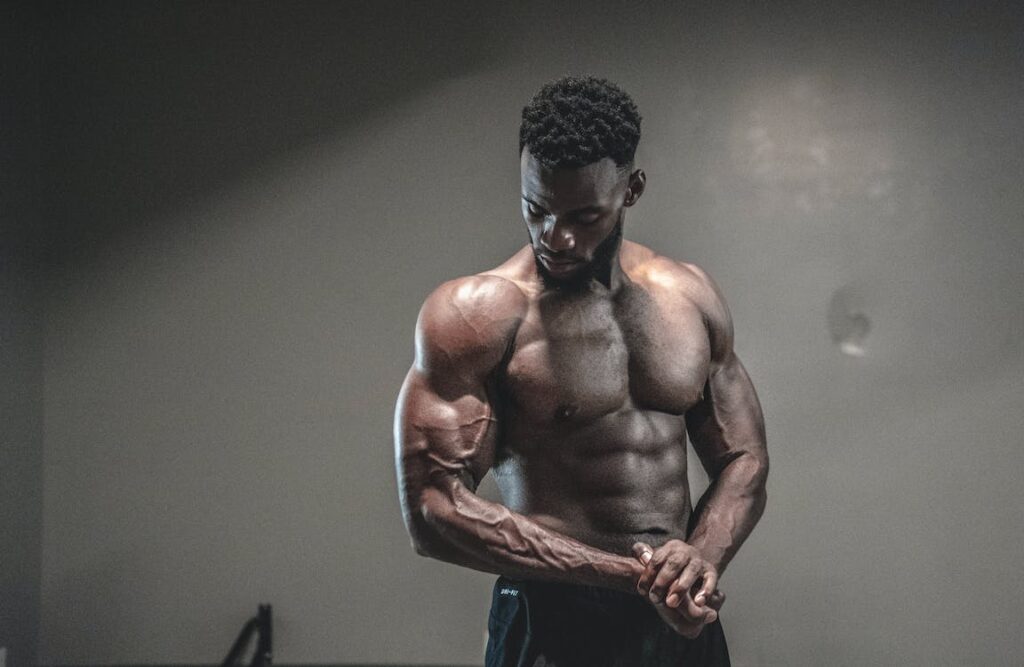
In the realm of fitness, gaining muscle mass and enhancing physical strength are perennial goals for many. A strategic approach to muscle building not only carves a visually appealing physique but also boosts metabolic rate, fortifies bone density, and elevates overall physical prowess. Here’s your all-inclusive guide to sculpting a stronger, more muscular body, ensuring your efforts in the gym translate into tangible results.
Elevate Your Strength with Weightlifting and Resistance Exercises
Harness the power of resistance to challenge your muscles, promoting growth and strength. Incorporate foundational weightlifting movements into your regimen to target key muscle groups and stimulate hypertrophy:
- Squats: A quintessential exercise that activates the lower body, including the quadriceps, hamstrings, and glutes. For an added challenge and muscle engagement, experiment with variations such as front squats and sumo squats.
- Deadlifts: This powerhouse movement works multiple muscles simultaneously, including the back, glutes, legs, and core. Proper form is paramount to maximize effectiveness and minimize injury risk.
- Bench Press: Essential for building upper body strength, particularly in the chest, shoulders, and triceps. Incorporating different angles, like the incline and decline bench press, can target various parts of the pectoral muscles.
- Arm Isolations: Bicep curls and tricep dips focus on the upper arm muscles. Utilize a range of equipment – from dumbbells and barbells to resistance bands – to keep these exercises challenging and engaging.
Solidify Your Core for a Strong Foundation
A robust core anchors your body, enabling more efficient movement patterns across all physical activities. Strengthening the core enhances balance, stability, and athletic performance:
- Planks: A versatile, all-encompassing exercise that strengthens the entire core. Experiment with variations like side planks and plank jacks for a comprehensive core workout.
- Russian Twists: Target the obliques with this dynamic movement, elevating your core’s strength and rotational power.
- Bicycle Crunches: An effective exercise to engage both the deep and superficial abdominal muscles, promoting a toned and strong midsection.
Pursue Full-Body Workouts for Maximum Muscle Engagement
Optimizing muscle growth involves engaging as many muscle groups as possible within a single workout. Full-body exercises not only expedite muscle building but also enhance cardiovascular health and endurance:
- Burpees: The ultimate full-body exercise, burpees combine a squat, push-up, and jump into one high-intensity movement.
- Lunge and Twist: A perfect fusion of lower body strengthening and core activation, this exercise improves balance, coordination, and flexibility.
- Renegade Rows: This challenging move integrates a plank with dumbbell rows, demanding strength and stability from the core, back, and arms.
Tailoring Your Muscle-Building Journey
Remember, achieving a stronger, more muscular physique is a marathon, not a sprint. Tailoring your workout routine to match your fitness level, goals, and preferences is crucial. Ensure your muscle-building efforts are complemented by a balanced diet rich in protein, adequate hydration, and sufficient rest for recovery. Celebrate your progress and adjust your strategy as you evolve, keeping your muscle-building journey both rewarding and sustainable.
By adhering to this comprehensive guide for building muscle, you’ll not only enhance your physical appearance but also improve your overall health and well-being. Stay dedicated, patient, and consistent, and watch as your body transforms into a stronger, more powerful version of itself.
Nutrition for Body Composition: The Fuel for Your Journey
Discovering the perfect balance between exercise and nutrition is paramount when it comes to transforming your body composition. Your diet serves as the backbone of your fitness goals, whether you’re looking to sculpt muscle, shed fat, or boost overall health. This section explores how strategic nutritional choices can significantly impact your fitness outcomes, guiding you toward a more informed path to achieving your desired body composition.
The Power of a Balanced Diet
Achieving optimal fitness is more than just intensive workouts; it’s also about fueling your body with the right nutrients. A balanced diet that encompasses a variety of foods ensures your body receives the perfect blend of carbohydrates, proteins, fats, vitamins, and minerals. This nutritional harmony supports muscle growth, energy levels, and recovery processes.
- Diverse Carbohydrates: Whole grains, fruits, and vegetables provide the energy your muscles need to perform and recover from workouts.
- Lean Proteins: Incorporate sources like chicken, fish, legumes, and tofu to facilitate muscle repair and growth.
- Healthy Fats: Avocadoes, nuts, and seeds offer essential fatty acids crucial for hormone production and cellular health.
- Hydration: Regular water consumption is vital to keep the body functioning optimally, especially during and after exercise sessions.
Amplifying Muscle Growth with Protein
Protein can’t be overlooked if muscle building is your aim. It repairs muscle fibers damaged during exercise, making them stronger and more voluminous over time. But how much protein do you need? A general guideline is to consume 1.2 to 2.0 grams of protein per kilogram of body weight, but it’s best to tailor this based on your specific fitness goals and activities.
Calorie Management for Effective Weight Control
Understanding and managing caloric intake are crucial for manipulating body composition. If muscle gain is the goal, creating a caloric surplus by consuming more calories than you burn encourages muscle growth. Conversely, a caloric deficit is essential for weight loss. However, it’s important to achieve this balance without sacrificing nutritional quality to ensure the body remains well-nourished and able to perform and recover.
Pro Tip: Implementing a diet rich in whole foods while keeping processed and sugary foods to a minimum promotes a healthier, more sustainable approach to weight management and muscle growth.
Note: Consultation with a professional nutritionist or dietitian is recommended to create a meal plan that’s tailored to your personal health status, fitness goals, and dietary preferences.
By integrating these nutritional strategies with your fitness regimen, you’ll be well on your way to achieving your desired body composition. Remember, consistency in both diet and exercise is key. Stay committed, make informed choices, and watch as your body transforms into its strongest, healthiest version.
Incorporating Exercise into Your Daily Routine
Integrating regular exercise into your daily routine is crucial for achieving and maintaining optimal health, strength, and mental well-being. However, many struggle to find the motivation or time to stay consistent with their fitness regimen. Below, we’ll explore practical and effective strategies to seamlessly incorporate exercise into your lifestyle, ensuring it becomes a habit rather than a sporadic endeavor. By adhering to these tips, not only will you enhance your physical fitness, but you’ll also discover the countless benefits of a more active lifestyle.
Cultivating a Mindset for Success
- Start with Why: Understand the deep, personal reasons why staying fit is important to you. Whether it’s improving your health, feeling more energetic, or boosting your confidence, having a clear purpose can significantly heighten your motivation.
- Gradual Progression: Begin with small, manageable workouts to avoid burnout and gradually increase the intensity as your fitness improves. This approach fosters a positive relationship with exercise, making it a sustainable part of your life.
Building a Fail-proof Exercise Plan
- Variety is Key: Keep boredom at bay by incorporating different types of workouts into your routine. From strength training and cardio to yoga and Pilates, experimenting with various forms of exercise can keep you engaged and eager to work out.
- Schedule Wisely: Plan your workouts as you would any important appointment. Allocating specific times for exercise in your calendar and setting reminders can significantly enhance your commitment to working out.
Leveraging Technology for Enhanced Motivation
- Fitness Apps & Trackers: Utilize technology to your advantage. Fitness apps offer personalized workout plans, progress tracking, and community support to keep you motivated. Meanwhile, wearable fitness trackers monitor your activity levels, sleep quality, and heart rate, providing valuable feedback to optimize your health.
- Virtual Workouts: Online fitness classes and virtual personal trainers can bring the gym experience to your home. This convenience is especially beneficial for those with busy schedules or who prefer not to visit a physical gym.
Engaging with a Supportive Community
- Find Your Tribe: Connect with like-minded individuals who share your fitness goals. Whether it’s joining a local sports club, attending group workout classes, or participating in online fitness communities, surrounding yourself with supportive peers can significantly boost your motivation.
- Accountability Partners: Partnering with a friend or family member on your fitness journey can keep you accountable. Sharing your goals and progress provides an extra layer of commitment and encouragement.
Reflecting on Your Journey
- Monitor Your Progress: Regularly revisiting your fitness goals and tracking your progress is crucial. Celebrating milestones, no matter how small, reinforces your motivation and dedication to maintaining an active lifestyle.
- Adapt and Evolve: Your fitness needs and preferences may change over time. Regularly re-evaluating your workout routine and making necessary adjustments ensures your fitness regimen remains effective and enjoyable.
By implementing these strategies, making exercise a consistent part of your daily life becomes not only attainable but also enjoyable. Remember, the key to a successful fitness journey is sustainability—finding what works for you and sticking with it over the long term. Start small, be patient with your progress, and watch as exercise becomes a natural and rewarding part of your daily routine.
Frequently Asked Questions (FAQ)
Q: How often should I do body composition exercises?
A: The frequency of exercise depends on your fitness level and goals. For weight loss, aim for at least 150 minutes of moderate-intensity exercise per week.
Q: Can body composition exercises be customized for different ages?
A: Yes, exercise programs should be tailored to accommodate the needs and limitations of different age groups to ensure safety and effectiveness.
Q: Are there specific exercises that are more effective for different body types?
A: While some exercises may seem more challenging for certain body types, the principles of weight loss and muscle building remain the same for everyone.
Q: What role does nutrition play in achieving my body composition goals?
A: Nutrition is fundamental in achieving any fitness or body composition goal. It influences your energy levels, recovery, muscle growth, and fat loss. A balanced diet rich in proteins, healthy fats, and complex carbohydrates, tailored to your specific needs and goals, is essential for optimal results.
Q: How do I stay motivated when I don’t see immediate results?
A: Staying motivated can be challenging, especially if progress isn’t visible or as rapid as expected. Setting smaller, achievable milestones and focusing on non-scale victories, such as improved sleep, higher energy levels, or better mood, can keep motivation high. Remember, consistency is key; changes happen over time.
Q: Is it necessary to have a gym membership to stay fit?
A: No, it’s not necessary to have a gym membership to stay fit. Many forms of physical activity, like bodyweight exercises, jogging, cycling, or yoga, can be done at home or outdoors without any specialized equipment. The most important aspect is to find an activity you enjoy and can maintain consistently.
Q: Can stress affect my body composition and fitness progress?
A: Yes, stress can significantly impact your body composition and fitness progress. Chronic stress can lead to overeating, poor sleep quality, and reduced motivation to exercise, all of which can hinder your fitness goals. Managing stress through meditation, sufficient sleep, and other relaxation techniques is vital for overall well-being and achieving your fitness objectives.
Final Words
A healthy body composition is not solely about losing weight or gaining muscle; it’s about adopting a holistic approach to health and fitness. By understanding the role of exercise and nutrition and tailoring your routine to your goals, you can sculpt a healthier, more resilient you. Remember, consistency and patience are key. Stay committed to your plan, and the results will follow.
Now, it’s time to take that first step towards achieving your body composition dreams. Whether you’re ready to hit the gym, lace up your running shoes, or simply start with a few push-ups at home, the path to a healthier you is within reach. Take this guide as your roadmap, and customize it to fit your fitness journey.
With determination and the right exercises, your body has the incredible capacity to transform. Start today, and witness the changes that will not only be visible in the mirror but, more importantly, will be felt in your daily life.


